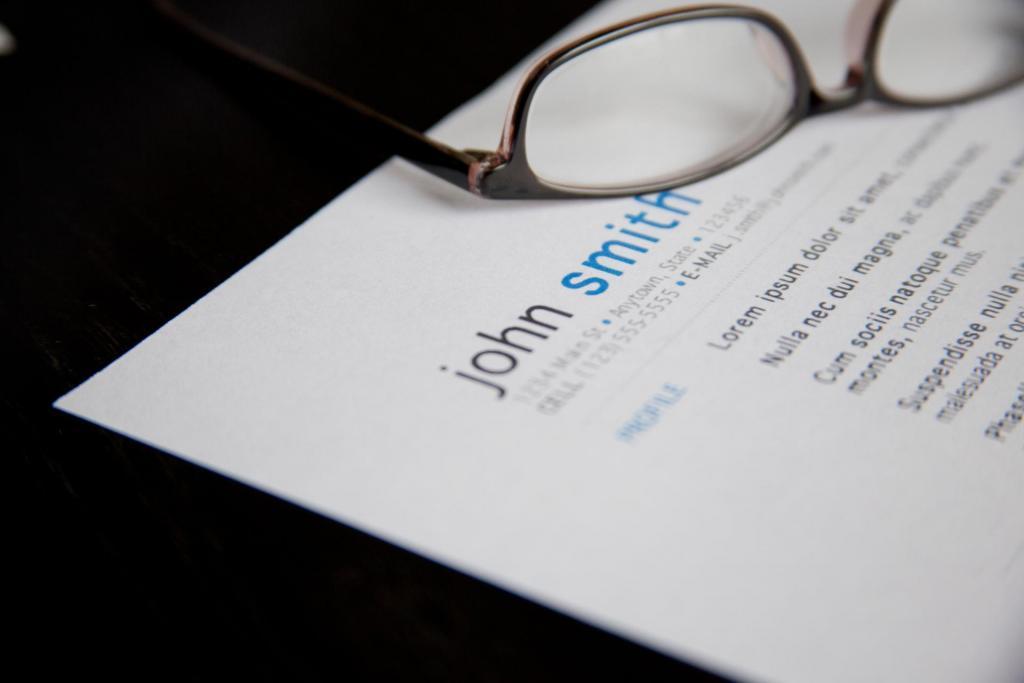13 Basic Rules For Building Your Resume The Right Way

Reshot/WR36 R.
Whether you’re job searching, interviewing or networking, keeping your resume up to date is super important. You never know when you’re going to need to hand it over to a hiring manager or contact in your industry. Plus, as your responsibilities grow at work, it’s smart to document what you’re doing so you can talk about it in meetings with your current (or future) boss.
However, when you’re working on your resume, it’s also important to make sure that you’re building it the right way. Before opening that document on your laptop, consider these resume building tips so that you create a piece of gold rather than something that’ll end up in the “meh” pile.
1. Build the right resume for your industry.
There are infinite ways to create a resume, but only one truly works for your industry. Some industries only want it to be one page long, while others are okay with multiple pages so that you can go into greater detail with each and every position you’ve held previously. If you’re not sure what’s relevant for yours, do a little research and even consider asking colleagues, bosses or mentors at work or in your industry if you can look at their resumes, too.
2. Don’t use a standard Microsoft Word resume template.
By building your resume in a generic template, you’re A) taking the very big risk of having the same format as someone else and B) saying you’re generic, and we know that you’re very much not. Your resume is a direct reflection of the professional you are now, the employee that you will be and the person that people work with. So get creative and own it with a unique design that speaks to who you are. We bet you’ll feel even more confident when handing it over.
3. Ditch the GPA and year of college graduation after you land your first job.
If you had a GPA of 3.5 or higher in college, you might have included it on your resume when applying for your first job. However, after a few years in the industry, you can let it go. It doesn’t take up a lot of space, but it’s not necessary after you get valuable work experience. It’s also time to get rid of your graduation year if you’ve been working full-time for a year or two. It can date you, and you don’t want a potential employer considering your age in a negative way when looking at your resume. They should really be focusing on your experience and skills.
4. Organize your resume based on what matters most in your industry.
If you’re still formatting your resume with your education at the top, your experience in the middle and skills at the end, think again. Depending on your industry, your experience or skills may easily trump your education. Highlight your strengths and what might matter most to the hiring manager at the top of your resume and then work your way down.
Pro Tip: This might be a little too basic, but it’s a good reminder: Always list your experience in chronological order, starting with the most recent at the top.

5. Quantify your experience.
The average recruiter or hiring manager spends just six seconds looking at your resume. That means they definitely won’t be able to read every perfectly crafted sentence on the page. To help move their eyes along to the important parts of your experience, include lots of numbers. Quantifying your experience is super helpful in showing how you made an impact in your role. For example, let’s say you’re a social media manager. Writing this statement — “Grew brand’s Twitter following by 300% in just 6 months” —with digits helps your accomplishments stand out a lot more, right? Even better, using digits takes up less room on the page, which means you can write about even more of your awesome experience.
6. Include any and every skill you have.
Skills can really be the icing on the cake for your resume. Think outside the box and list every skill you can think of. If you’re great at social media, list the platforms. If you’re a writer, how many style guides do you know? What software programs are you well versed in? List them out!
Pro Tip: Some companies put resumes through a software program to scan for keywords before handing them over to the hiring manager. The more keywords you put in your resume (like in your skills section), the better.
7. Use a clean font.
It might be tempting to get super creative and use an out-of-the-box font, but keep it simple. The easier to read, the better. There are a few great resume fonts out there that tend to trump all others, so stick with those.
8. Skip the objective.
Instead of including an objective, which can take up valuable space on the page, just don’t submit your resume for a job without an email or cover letter detailing your intent and career goals. And if you’re passing it along to an industry contact, just give them some context when handing it over.
9. Include your organizations.
Whether you’re a post-graduate mentor to students in your sorority or fraternity, on the board of a charitable organization or a big sister or brother to a child in need, list your activities and organizations in their own section. It helps tell your story on paper of who you are and how you spend your time outside of the office. Plus, you never know who knows who and what connections you may have in common through one of them!

10. Drop the references.
Whether you have them listed on your resume or just the statement. “References available upon request,” get rid of that section. Again, like the objective, it takes up valuable space. Plus, chances are that even if you have them on the page, the hiring manager will still ask you to send them over via email or through a separate system when it comes
11. If you list social media as a skill, include your handles on your resume.
You can create a social media section and list your handles in order to demonstrate which platforms you’re on. However, before you do, make sure you clean up your accounts so that there’s nothing on them that you wouldn’t want any hiring managers to see.
Pro Tip: To make it even easier for the person reading your resume, save the document as a PDF that allows you to click on the links that you include in it. This will allow them to see your social media accounts and any other web pages ASAP when they open the document on their computer.
12. Do something to stand out from the crowd.
Maybe you have a personal brand logo, a color that you feel embodies who you are or great graphic design skills. Whatever it may be, include it on your resume. It could be as simple as making your name at the top of the page big and bold in the color purple, or using a progress bar design to show your level of expertise with each skill you list. Think big so you stand out because the last thing you want is for your resume to look like submissions from every
13. Write your name in the largest font on the page.
You want to make a lasting impression on the hiring manager, and one of the easiest ways to do that is to write your name in the largest font size on the page. Your name should be big and bold so that it’s easy to read and remember. Think of it like a headline for an article — it’s always the first thing you read and it’s always in the largest font size. This will help you stand out from the crowd and hopefully land the job.
Your resume is an important part of your professional identity. Follow these basic resume building tips and you’ll be on your way to your dream job in no time.
RELATED
9 Insanely Helpful Resume Formats That Will Give Yours A Run For Its Money
Make Over Your Resume With Something That Will Jolt Recruiters
My Resume Isn’t What Landed Me My Dream Job — Here’s What Did











